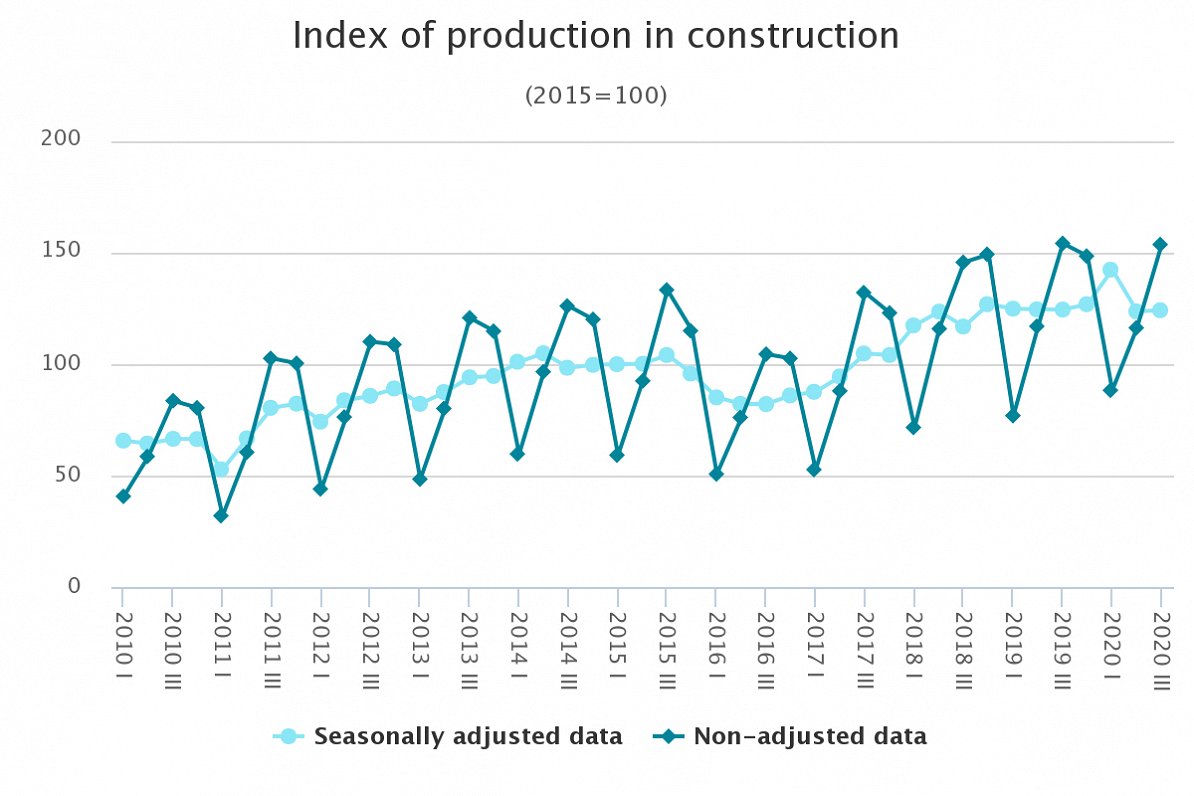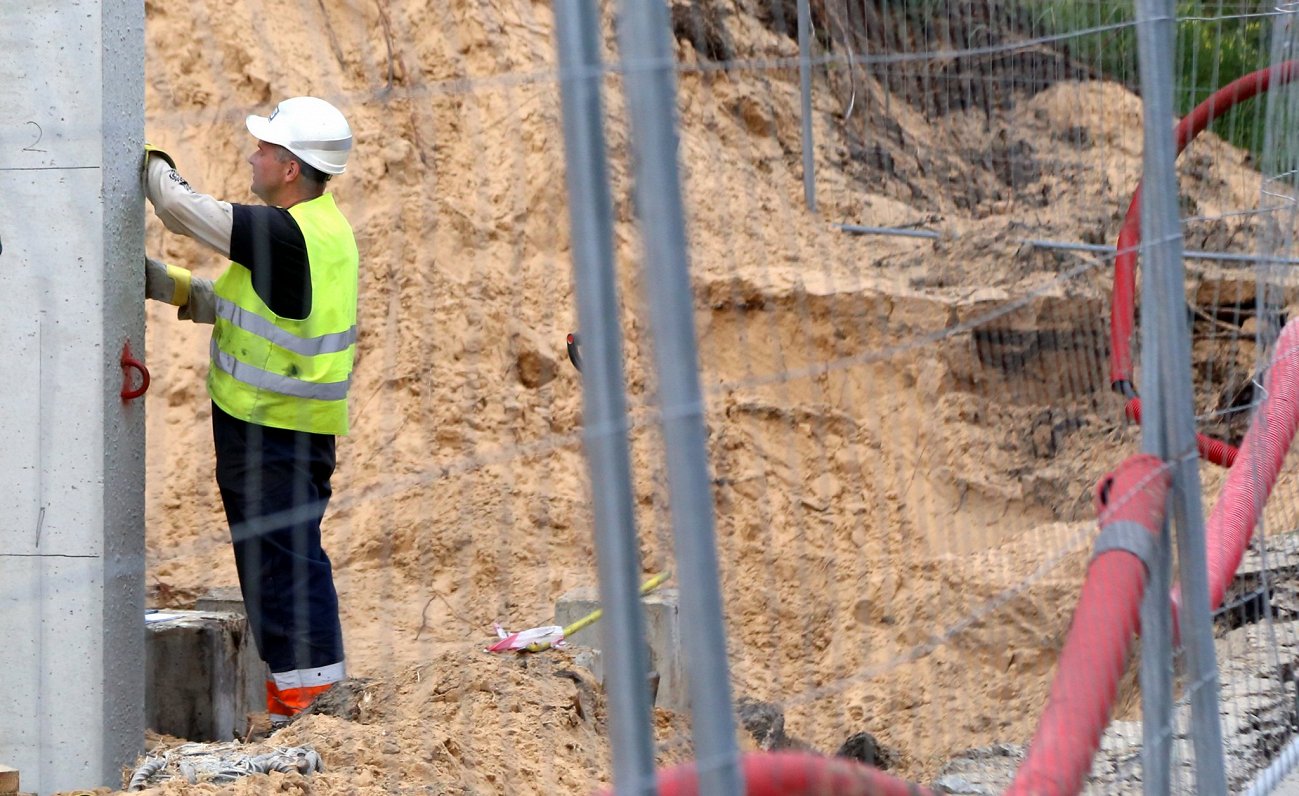Construction output in civil engineering decreased by 8.1%, but increased in construction of buildings and specialized construction activities – by 1.9% and 7.8%, respectively.
Output decline, as compared to the corresponding quarter of the previous year, was in all sectors of civil engineering: in construction of roads and railway (3.5%), construction of utility projects (13.4%), as well as construction of water projects and other civil engineering n.e.c. (35.2%).
In turn, construction output rise was observed in specialized construction activities – by 7.8 %, and that was affected by output growth in such activities as specialized construction activities (roofing and other specialized construction activities n.e.c) – by 20.5 %, building completion and finishing (plastering, floor and wall covering, painting and glazing, etc.) – by 9.2 %, as well as in electrical, plumbing and other construction installation activities – by 5.5 %.
Compared to the 2nd quarter of 2020, in the third quarter of 2020, construction output increased by 0.4% (according to seasonally adjusted data at constant prices), of which specialized construction activities – by 0.5 %, but construction of buildings reduced by 2.9 % and civil engineering – by 2.3 %.

Construction output changes
(as per cent, at constant prices)
|
|
January–September 2020, compared to January–September 2019 (calendar adjusted) |
3rd quarter of 2020, compared to |
|
|
2nd quarter of 2020 (seasonally adjusted) |
3rd quarter of 2019 (calendar adjusted) |
||
|
Total |
2.9 |
0.4 |
-0.3 |
|
Construction of buildings |
3.2 |
-2.9 |
1.9 |
|
Civil engineering |
-4.6 |
-2.3 |
-8.1 |
|
Construction of roads and railways (incl. bridges) |
-5.8 |
5.8 |
-3.5 |
|
Construction of utility projects |
3.7 |
-19.2 |
-13.4 |
|
Construction of other civil engineering projects n.e.c. (water projects and other civil engineering n.e.c.) |
-27.1 |
7.6 |
-35.2 |
|
Specialised construction activities |
9.7 |
0.5 |
7.8 |
|
Demolition and site preparation |
0.4 |
-8.8 |
-13.3 |
|
Electrical, plumbing and other construction installation activities |
7.2 |
-10.0 |
5.5 |
|
Building completion and finishing (plastering, floor and wall covering, painting and glazing, etc.) |
5.1 |
14.4 |
9.2 |
|
Other specialised construction activities n.e.c. |
27.7 |
23.7 |
20.5 |
Building permits granted
In the third quarter of 2020, 902 building permits were granted for the construction, capital repairs, reconstruction and restoration of residential buildings with the total floor space of 239 thousand m2. That is 121 building permit less, but 24 thousand m2 larger space than in the third quarter of 2019, of which 691 permit with the intended floor space of 186 thousand m2 were issued for construction of new buildings (77 building permits less, but 40 thousand m2 larger intended floor space than a year ago). Out of the total number, 554 permits were granted for construction of one-dwelling buildings (with intended floor space of 123 thousand m2).
475 building permits were granted for the construction, capital repairs, reconstruction and restoration of non-residential buildings with the total floor space of 259 thousand m2. That is 25 permits and 167 thousand m2 of intended floor space less than in the third quarter of 2019, of which 324 permits with the intended floor space of 137 thousand m2 – for construction of new non-residential buildings. In its turn, 83 building permits were granted for construction of industrial buildings and warehouses with the total floor space of 61 thousand m2, of which 55 permits were issued for construction of new buildings with the total floor space of 33 thousand m2.






























